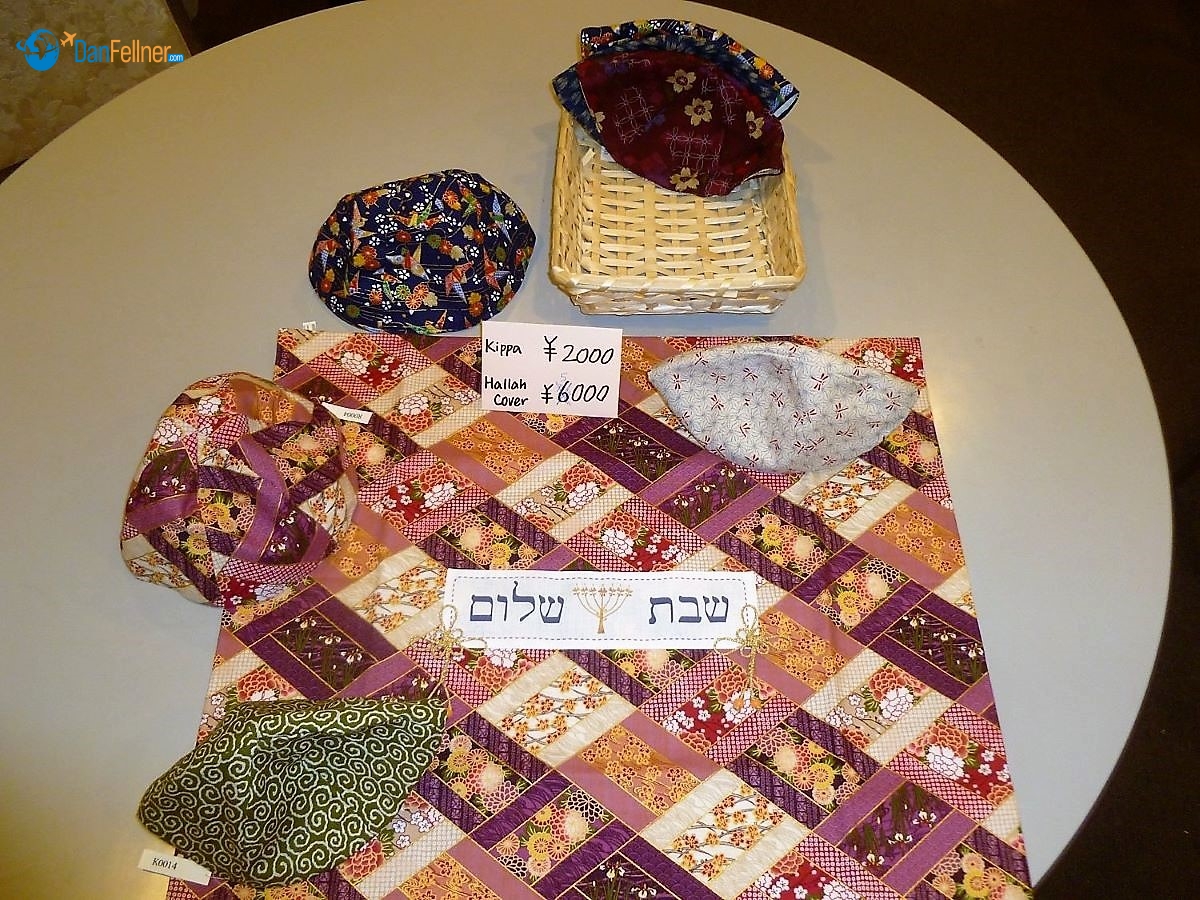Jewish response to tragedy in Japan demonstrates tikkun olam
The Jewish News of Greater Phoenix – June 8, 2012
TOKYO- It was the afternoon of Friday, March 11, 2011, and Rabbi Antonio Di Gesu was busy getting ready for Shabbat services at the Jewish Community of Japan’s building in an upscale section of central Tokyo called Shibuya.
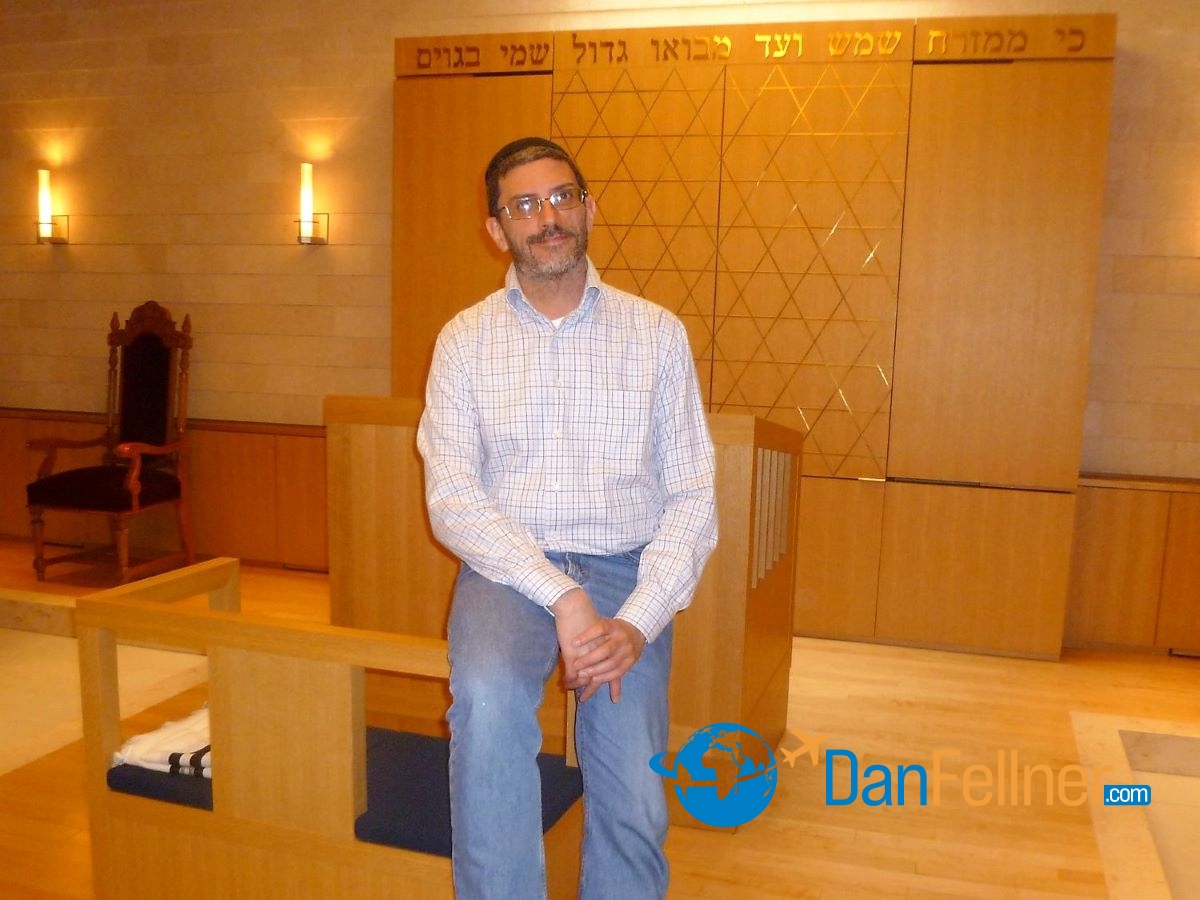
Rabbi Antonio Di Gesu in the sanctuary of the Jewish Community of Japan.
At 2:46 p.m., the building started to shake, an alarm sounded, and Di Gesu and the rest of his small staff rushed outside. Standing in a parking lot, he could see buildings in the neighborhood actually swaying back and forth and the ground beneath him made him feel like he was on an airport people-mover.
“The asphalt was moving – going back and forth,” he recalls. “It was like being in a dream.”
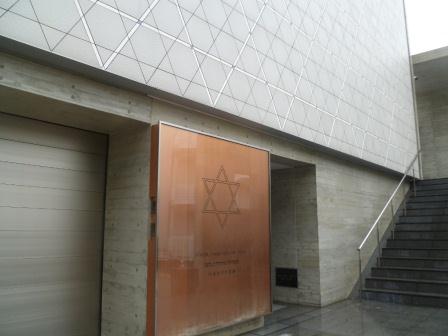
Entrance to the Jewish Community of Japan building in Tokyo, once home to a samurai mansion.
Di Gesu had been living in Japan for two years and had felt tremors there several times before, but nothing close to the 9.0 earthquake – the biggest in Japanese recorded history – that rocked the island that Friday afternoon and triggered a massive tsunami in the northeastern part of the country.
Once it became clear that Tokyo had escaped relatively unscathed, Di Gesu decided to go forward with Shabbat services that evening, even though only four people turned up.
“It was the right thing to do,” he said, noting the Shabbat prayers “had a different meaning this time, as the roaring waters mentioned in the psalms were not a poetical image, but in reality a few hundred kilometers from us.”
Wanting to learn more about Jewish life in the world’s largest metropolitan area, I met Di Gesu on a rainy afternoon at the Jewish Community of Japan in late April during a weeklong visit to Tokyo. I also asked him about the much-heralded Jewish response to what proved to be the most expensive natural disaster in human history.

Downtown Tokyo, Japan.
Centered off the northeastern coast of Japan near the city of Sendai, about 190 miles north of Tokyo, the quake and tsunami led to a meltdown at the nuclear power plant in the region. Nearly 20,000 people lost their lives and more than 300,000 Japanese were rendered homeless. Property damage has been estimated at $235 billion.
As soon as Shabbat ended, Di Gesu was contacted by the Israeli Embassy in Tokyo about getting involved in relief efforts. Even though none of the estimated 2,000 Jews living in Japan had been killed, hurt or even displaced by the tragedy, Di Gesu didn’t hesitate. After all, he thought, what better way to demonstrate one of Judaism’s guiding principles – tikkun olam (repairing the world)?
Di Gesu sent out an email to his congregants appealing for help. One bought more than two tons of flour and had it delivered to the displaced. Another congregant, an 11-year-old girl named Lucie Kapner whose father teaches at the JCC’s Sunday school, single-handedly organized a bicycle collection program. Nearly 100 bicycles were sent to disaster victims in a destitute town.
“I was extremely proud of her,” said Di Gesu. “It meant that her parents had taught her the right things, had instilled in her good Jewish values.”
Other congregants organized food drives and took time off work to help with the cleanup. An account at a Japanese bank was set up for Jews in Japan and around the world to donate money. The American Jewish Joint Distribution Committee and other Jewish organizations got involved. All told, Jews around the world contributed nearly $3 million in disaster relief, according to Di Gesu.
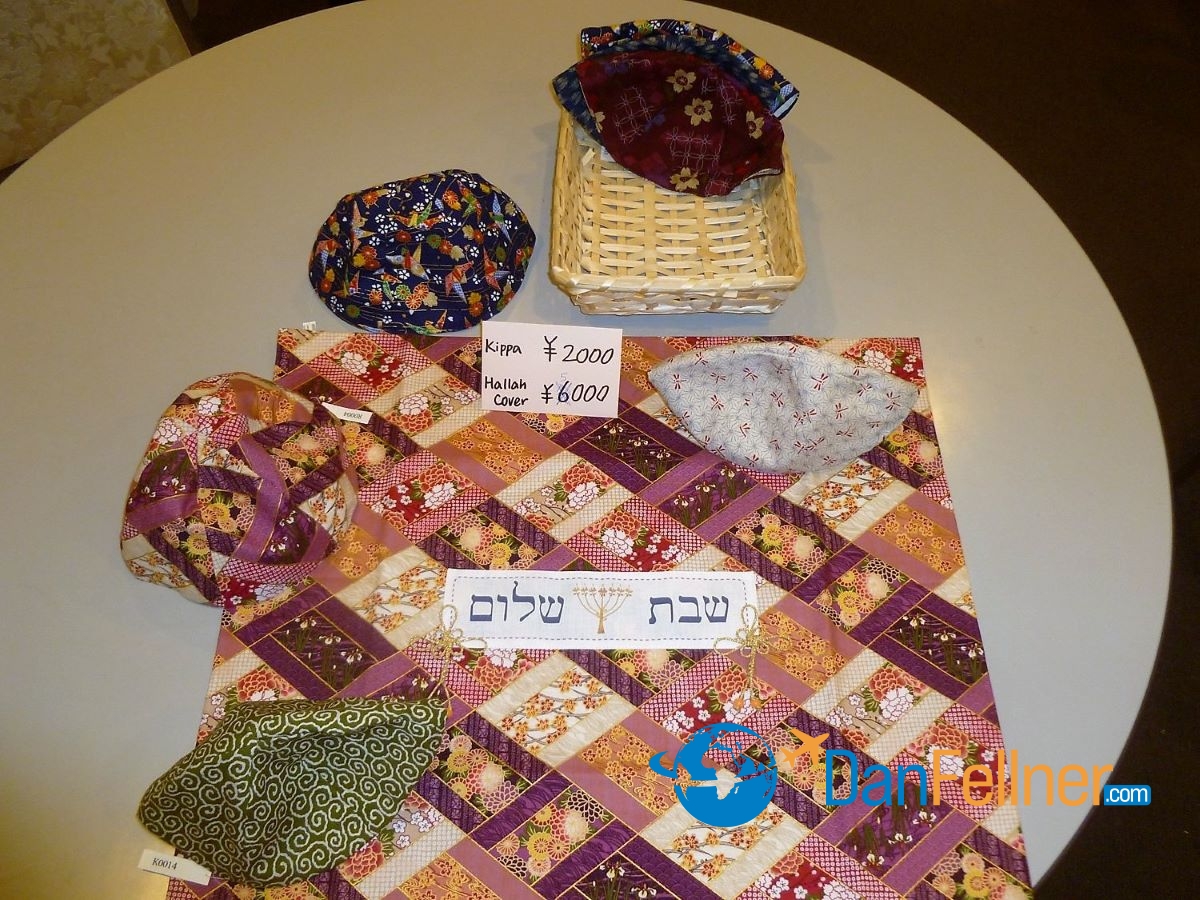
Challah covers and yarmulkes handmade from Japanese-kimono fabric for sale in the Tokyo synagogue.
Israel was one of the first countries to come to Japan’s aid, establishing a 50-member field hospital in a coastal fishing village that was devastated by the tsunami. When the Israelis finished their work, they left behind most of the medical equipment they had brought with them.
The Chabad House of Tokyo also played a vital role in disaster relief. Rabbi Binyomin Edery, who has lived in Tokyo since 1999, made more than 50 trips to northern Japan, personally delivering aid supplies.
Di Gesu said the Jewish assistance has helped build important “bridges of understanding” with the Japanese public, many of whom had known little about Jews before the disaster, good or bad. “They come with no baggage,” he said of the Japanese attitude toward Jews, adding that in his three years in Japan, the only anti-Semitism he has witnessed came from foreigners.
There are only two synagogues in Japan – one in Kobe and the Jewish Community of Japan, a Conservative congregation in Tokyo that was established in 1953. That original synagogue was torn down in 2008 and replaced on the same site a year later with a sleek, gray-block building designed by an award-winning Japanese architect.

A five-story Shinto pagoda in the Asakusa section of Tokyo.
Di Gesu said at one time the site was home to a samurai mansion. When going inside, visitors are politely asked to remove their shoes and replace them with slippers, a Japanese custom. The most popular items for sale in the gift shop are colorful challah covers and yarmulkes handmade from Japanese-kimono fabric.
It’s Judaism with a Japanese twist.
The building also contains more traditional Jewish elements, such as a sanctuary, kosher kitchen (meat is imported from the U.S.), a Hebrew school, library and mikvah. About 100 families belong to the congregation, 80 percent of whom are American. Di Gesu said many of the congregants have Japanese spouses.
Visitors to Japan are welcome to attend Shabbat services on Friday evenings and Saturday mornings or enjoy a kosher meal in a congenial atmosphere (reservations are suggested, rsvp@jccjapan.or.jp).
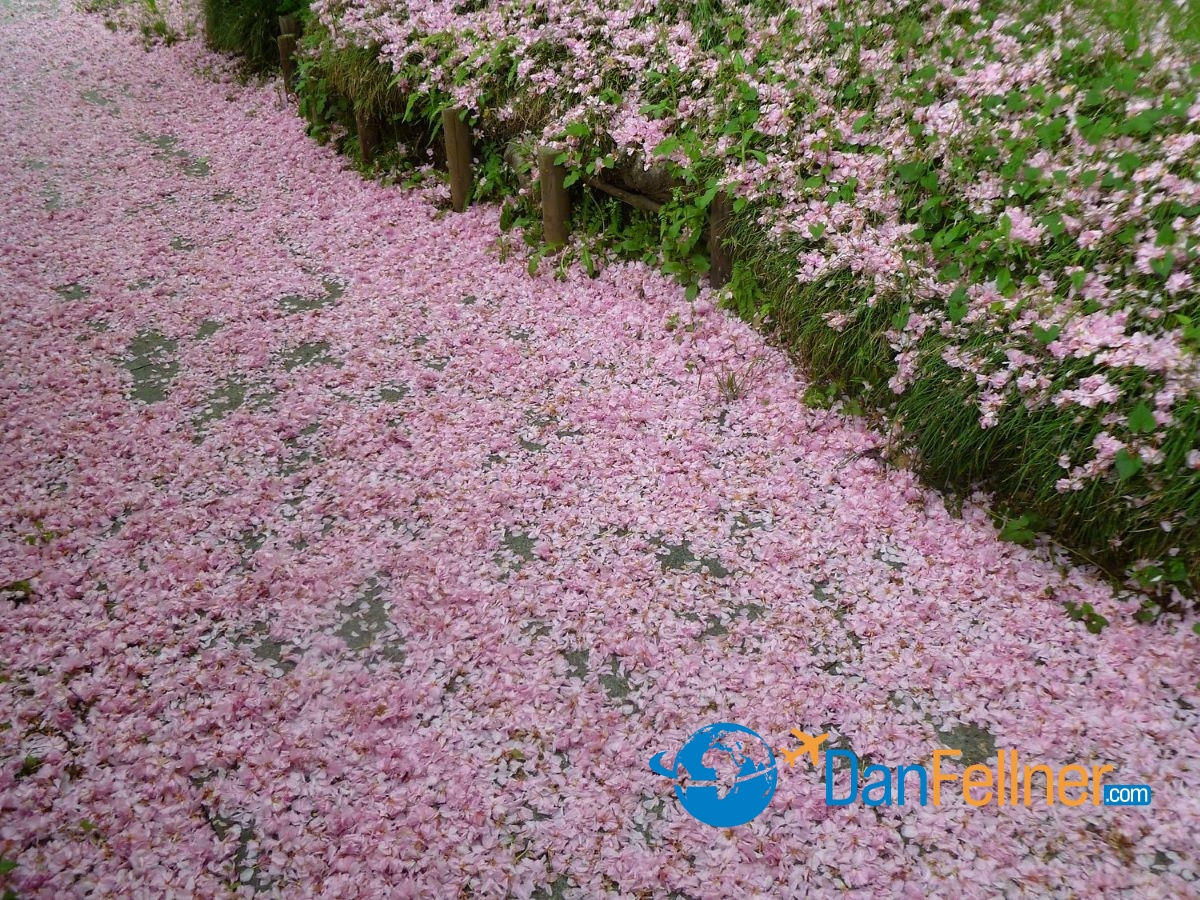
Cherry-blossom season in Tokyo.
Like most of his congregants, Di Gesu is an expatriate. He was born in Sicily, went to college in Rome, and later graduated from the Jewish Theological Seminary in New York. Before coming to Japan, he led a Conservative congregation in Long Island, N.Y. He speaks seven languages and has translated half a dozen books from Hebrew to Italian.
What’s it like being a rabbi in Japan? “It’s absolutely unique,” he said. “Sometimes, it feels like we’re at the end of the world. We are really far away.”
Di Gesu said there’s a common misconception that Japanese people are not religious. “Being in the religion business, it’s interesting to me how religion pervades everything, even though when you ask them, they tell you, ‘No, I’m not religious.'”
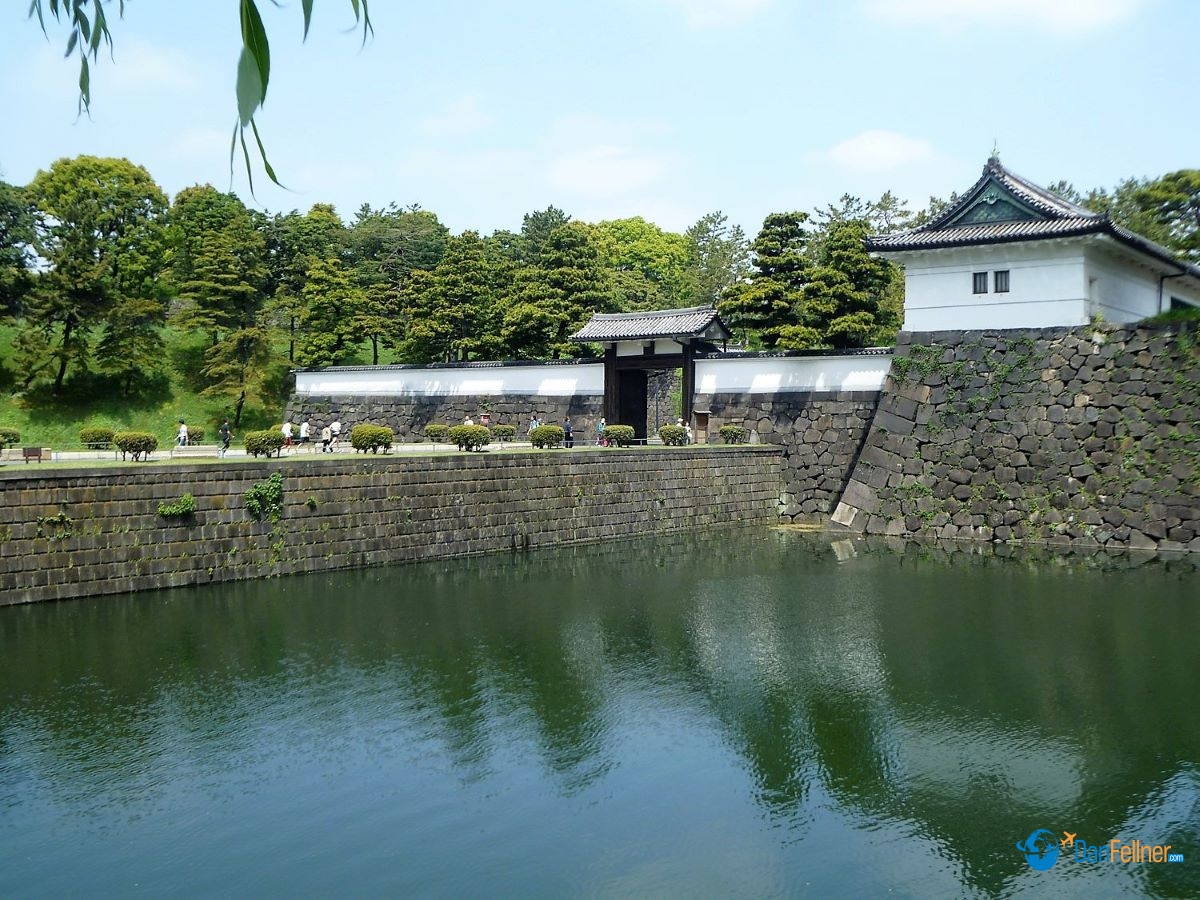
Tokyo’s Imperial Palace.
For example, Di Gesu said that at the groundbreaking of the new synagogue, a Shinto priest was brought in to offer a blessing at the request of the Japanese construction crew. “Otherwise, they refused to work,” he said.
Di Gesu misses the multiculturalism of New York City. People say Japanese culture is so homogenous that even the cab drivers are Japanese. But Di Gesu is making the most of the experience, taking Japanese-language classes three times a week and immersing himself in Japanese culture.
“Yes, I miss the multiculturalism,” he said. “But here you can learn about a really rich culture that’s totally fascinating.”

© 2012 Dan Fellner

